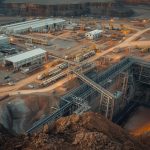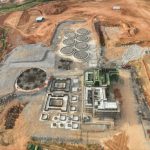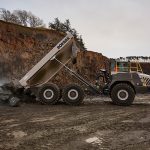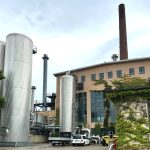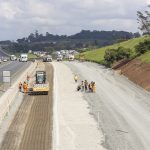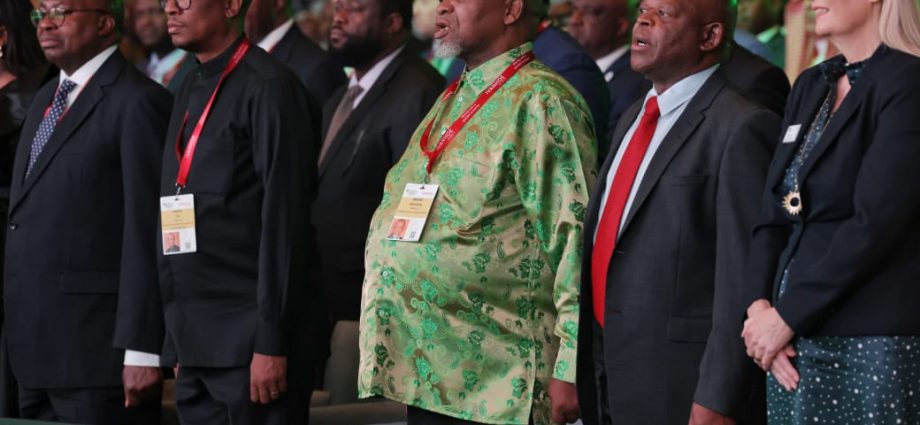Master of Ceremonies,
His Excellency, the President of the Republic of South Africa, H.E Cyril Ramaphosa
Your Excellencies,
Members of the Diplomatic Corps
Ministers and Deputy Ministers
Deputy Minister of Mineral and Petroleum Resources, Ms Phumzile Mgcina
Chairperson of the National House of Traditional and Khoi-San leaders, Kgosi Thabo Milton Seatlholo and Provincial Chairpersons
Organisers of the 2024 Investing in Africa Mining Indaba
Captains of Industry, and Members of the Investment Community
Leadership of Organised Labour, Civil Society, and Communities
Distinguished Guests
Members of the Media
It is with a great sense of pleasure that I, once again, welcome you to South Africa on the occasion of the 31st edition of the Invest in African Mining Indaba.
Convened under the theme “Future-Proofing African Mining, Today!”, this year’s mining indaba coincides with the 70th anniversary of the adoption of the freedom charter, which made a clarion call that “the people shall share in the country’s wealth”. This gathering is precisely about having discussions about Africa’s mineral wealth and her people sharing in it.
To comprehend the magnitude of the mineral wealth that the people of South Africa ought to benefit from and share, in 2024 we undertook a study on the state of mining in South Africa in conjunction with the formulation of the country’s critical minerals strategy. Spearheaded by Mintek supported by the industry, the study reveals that South Africa and, by extension, Africa is sitting on the right real estate with an exceptional mineral endowment.
Not only is the South African mining industry diversifying from the gold mining era to an industry with a wide range of mineral resources, but it also remains the bedrock of our economy and an attractive sector for new and greater investments.
Despite the decline in gold mining due to complexities and costs of safely reaching deposits at depths over 4 kilometres, in 2023 South Africa’s gold production reached 96 tonnes, thereby becoming the world’s thirteenth (13th) and Africa’s fourth (4th) largest gold producer. The sector further employed over ninety thousand (90 000) people, making it the third largest employer after coal and the platinum group metals (PGM) sectors.
In 2021, South Africa’s PGM production reached its highest level in the past decade with 285 tonnes. Notwithstanding the decline in the PGM basket price, in 2023, South Africa was the world’s largest producer of PGMs, accounting for 73% of global new mine supply of platinum, 38% of palladium and 81% of rhodium supply to global commodity markets.
There is a strong case emerging out of the study that the PGM sector will play a catalytic role in sustaining the mining industry for many generations to come.
Furthermore, there is evidence that the African continent hosts significant reserves of industrially important minerals such as, manganese, copper, coal, nickel, cobalt, titanium, vanadium, lithium, and rare earth minerals.
With the growing demand for these minerals, Africa needs to assert its advantage and take charge of the growing demand. We cannot continue to debate these minerals based on the dictates of some developed nations as if we have no aspirations to accelerate Africa’s industrialisation and close the development deficit. There is no other point in time that will be more opportune for Africa to take control of its development while still pursuing our strategic partnerships with the rest of the world. We must, therefore, avoid the race to the bottom.
The truth of the matter is that Africa is the world’s richest mining jurisdiction, possessing at least 90 percent of the world’s chromium and platinum, 40 percent of the world’s gold, and the largest reserves of the world’s cobalt, vanadium, manganese, and uranium. Despite having these abundant mineral resources, Africa remains poor, and this must change.
Whereas the notion critical minerals lacks consensus on the definition and categorisation, several nations – in particular developed nations – have conceptualised these minerals according to their national contexts. In the main, these nations have defined these minerals according to their importance in the energy transition; hence the emphasis on “green minerals” and thereby ignoring all other value chains, such as the mobility sector, medical applications, and digital economy.
Instead of using a narrow definition and classification system for these minerals, Mintek has adopted a methodology that is based on assessing the criticality of minerals across five primary criteria: export significance, local economic significance, industrial importance, employment, and global market demand. This is informed by our firm view that critical minerals cannot be synonymous to energy transition. Instead, they must facilitate the developmental and sustainability objectives within domestic and international industrial sectors. The strategy is now near completion and slated for cabinet approval by the end of this month. For the benefit of delegates to this indaba, we will tomorrow unpack both the study on the state of mining and the country’s critical minerals strategy.
South Africa has approximately 37% of the world’s manganese ore reserves, thereby securing its position at the pinnacle of manganese reserve rankings globally. In tandem with its vast reserves, South Africa also leads in manganese production with an output of 7.2 million metric tonnes in 2023.
Regrettably, only 2% of these manganese ore is processed in the country, as estimated by the International Manganese Institute. In cognisant of this reality and the fact that a lot of value is derived in the processing of these resources, we will this year intensify our engagements with the manganese producers and investors to invest in local beneficiation and thereby add value to these minerals.
We are mindful that for local beneficiation to succeed, we need to guarantee consistent, reliable, and affordable electricity supply. Despite the recent setback, I can assure you that, now that we have reached over 9 months with no electricity interruptions, government is working on measures to reduce administered prices, and in so doing reduce the cost of doing business in South Africa. We are also considering sustaining commodity linked tariffs, as well as consolidating and applying incentives and other existing financial instruments to support and encourage beneficiation.
We, therefore, urge African leaders and investors across the continent to also promote the beneficiation of these minerals close to the point of production so that we can stop the export of jobs and profits.
We are, however, alive to the fact that there can be no mining or beneficiation without exploration; hence, our steadfastness to reignite exploration investment and, in so doing, turn South Africa into an exploration site. Our efforts in this regard are beginning to take shape, as evidenced by progress made since we launched the country’s exploration fund during the last mining indaba. We are buoyed by the fact that of the eight beneficiaries to receive funding from the first funding call, at least three of the projects are 100% black-female-owned, whereas all other beneficiaries are more than 50% black-owned.
Between February and March this year, a further twenty projects will receive funding to the tune of R67 million as part of our artisanal and small-scale mining fund, of which at least three projects are female owned. Thereafter, the department will issue another call for applications.
During the previous mining indaba, we committed to putting in place a new mining licensing system to enhance efficiency and transparency in our systems and thereby guarantee regulatory certainty in the South African mining Industry.
I can report to you that, the department and the PMG Consortium are currently finalising the design and configuration phase which is at the heart of the new system. This phase covers all aspects of mining regulations value chain including, inter alia, the client management functionality, rights application submission and processing, and the rights application tracking functionality.
This phase of the project is anticipated to be completed in the next few weeks, and will, thereafter, be followed by the testing and deployment of the new system into the department’s ICT system.
Despite the ongoing work to develop the new mining licensing system, I can also report to you that the department continues to clear the backlog in prospecting and mining applications. Between our last meeting here and December 2024, the department processed and finalised 114 mining rights, 982 prospecting rights, and 385 mining permits and ancillaries.
Allow me to express our appreciation to the South African mining industry for their unwavering commitment to safeguarding the health and safety of mineworkers, as evidenced by yet another lowest record of mine fatalities in the history of South African mining. Working together, we can realise the goal of zero harm.
With this being the very first time that an African economy leads the G20 for a full one-year term, let us leverage on this opportunity to shape a new era of the African mining industry that meaningfully contributes to the socioeconomic development of our continent, and in building the Africa We Want.
I thank you.
